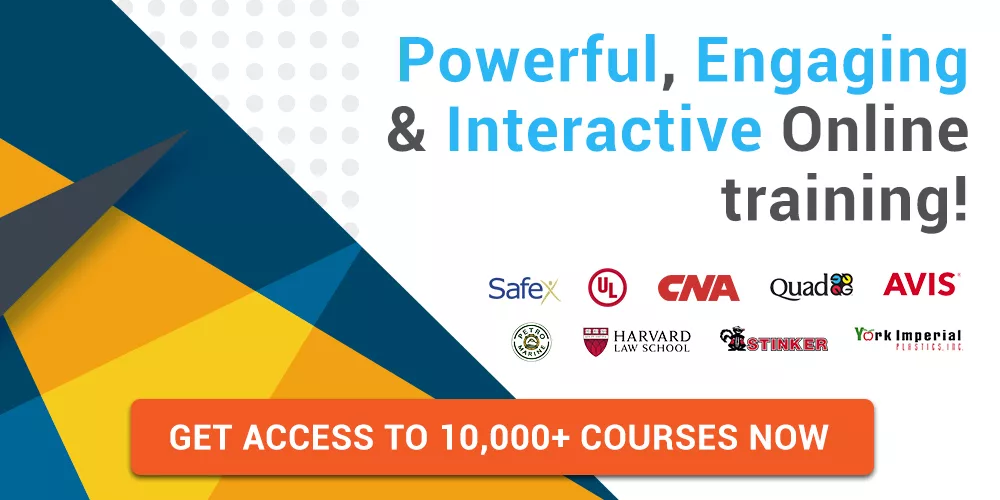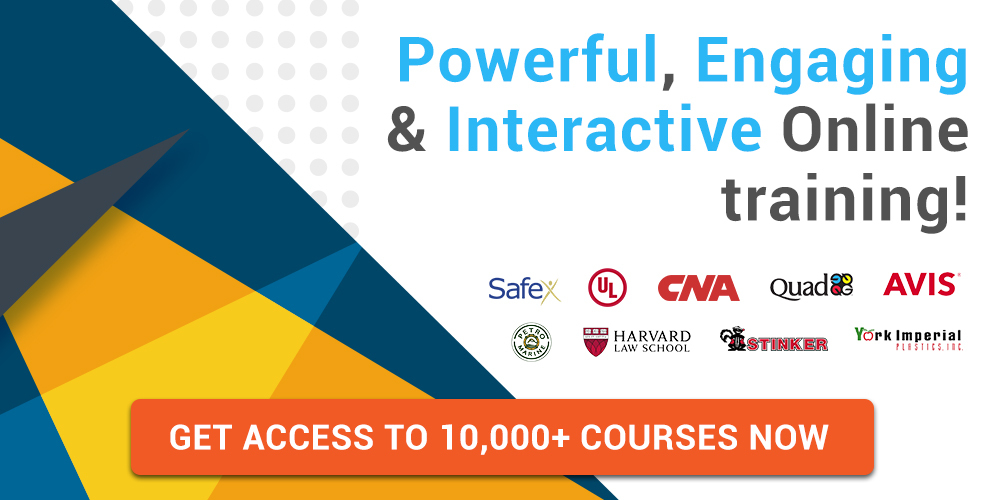How To Manage Stress And Anxiety At Work: Top 10 Tips & Coggno Training
Tight deadlines, high expectations, and the volume of work all lead to workplace anxiety. Although this term may seem like any other casual term, if not cured at the right time, it can lead to burnout, decreased performance, and severe health issues. And we are not saying it without proof.
According to the Anxiety and Depression Association of America, 72% of individuals who have daily stress and anxiety say it interferes with their lives.
While we cannot eliminate anxiety entirely, we can learn proactive tips to manage it. This blog aims to provide actionable tips for managing anxiety at work.
The below tips on how to manage stress and anxiety will help you create a healthier, more productive work environment.
Save Thousands Of Dollars With Coggno Prime Subscription
Top 10 Tips For Managing Stress And Anxiety
- Identify your Triggers
- Practice Mindfulness and Meditation
- Maintain a Healthy Work-Life Balance
- Stay Organized
- Communicate Effectively
- Prioritize Self-Care
- Seek Professional Help
- Develop Coping Strategies
- Foster a Supportive Work Environment
- Embrace Flexibility
Tip 1: Identify Your Triggers
The first step to managing anxiety is understanding what triggers it. Triggers vary from person to person and can be anything like rushed schedules, disagreements with colleagues, or overwhelming tasks.
Below are some ways to keep anxiety at bay:
- Journaling: Keep a journal to note when and where you feel anxious. With time, you will start noticing your anxiety patterns, which will help you identify them.
- Ask For Feedback: Ask colleagues and supervisors about your behavioral responses. They might see patterns in your behavior that you overlook.
Once you know what triggers your anxiety, you will also learn the ways to manage it. For instance, if tight deadlines are a trigger, breaking tasks into smaller, more manageable chunks can help. If conflicts with colleagues cause anxiety, learning conflict resolution techniques can be beneficial.
Managing Stress at Work (Course)
Tip 2: Practice Mindfulness And Meditation
Mindfulness and meditation are two powerful tools for managing anxiety. They help you stay present, reduce negative thoughts, and improve your sense of well-being.
- Mindfulness Techniques: Practice deep breathing exercises, progressive muscle relaxation, or mindful walking. These activities can help ground you and reduce anxiety in the moment.
- Meditation Apps: Use apps like Headspace or Calm to guide you through meditation practices. These apps offer various programs tailored to different needs, from reducing stress to improving focus.
A study reveals that an 8-week mindfulness meditation program is equally as effective at treating anxiety as a typical antidepressant. Adopting these techniques into your daily routine can help create a more balanced and calm work environment.
Tip 3: Maintain A Healthy Work-Life Balance
No matter what else you do to tame your anxiety, having a healthy work-life balance is a priority. If you don’t balance your work-life, it can lead to burnout, which will exacerbate your anxiety and decrease productivity.
Below are some ways to maintain a healthy work-life balance
- Set Boundaries: Define clear work hours and stick to them. Avoid checking emails or working outside of these hours.
- Take Breaks: Schedule regular breaks throughout your workday. Short breaks can help you recharge and maintain focus.
Employees who maintain a healthy work-life balance are more productive. So prioritize your personal time and significantly reduce work-related anxiety.
Read More: 20 Tips to Maintain a Work-Life Balance Even in a Busy Schedule
Tip 4: Stay Organized
Disorganization can increase anxiety levels tenfold. An organized workspace and a clear plan for your tasks can help you feel more in control.
Below are some ways to stay organized and clear:
- To-Do Lists: Create daily or weekly to-do lists to prioritize your tasks. Use tools like Trello or Asana to manage your workload.
- Declutter: Keep your workspace clean and organized. A clutter-free environment can reduce stress and improve focus.
Staying organized can help you manage your time more effectively and reduce the anxiety of feeling swamped with work.
Read More: 10 Tips To Boost Your Mental Health
Tip 5: Communicate Effectively
Communicating clearly and effectively will leave no room for misunderstandings and anxiety. You create a more supportive work environment when you clearly express your needs and concerns.
Below are some ways to communicate effectively and clearly:
- Assertiveness Training: Learn to communicate your needs assertively. It involves expressing your thoughts and feelings honestly and respectfully.
- Active Listening: Practice active listening to understand others’ perspectives better. It can help build stronger relationships and reduce conflict.
According to Grammarly’s research, 50% of employees recognize that poor communication adds to stress, with a 7% rise. Developing good communication skills is crucial for managing anxiety.
Tip 6: Prioritize Self-Care
Self-care is essential for managing anxiety. Taking care of your physical, emotional, and mental health can significantly reduce stress levels.
With the ways below, you can prioritize your health and self-being:
- Exercise Regularly: Physical activity releases endorphins, which can improve your mood and reduce anxiety. Aim for at least 30 minutes of exercise most days.
- Healthy Diet: Eating a balanced diet can affect your mood and energy levels. Avoid excessive caffeine and sugar, as they can increase anxiety.
A study reveals that regular exercise can reduce anxiety by up to 60%. Prioritizing self-care can help you manage anxiety more effectively.
Tip 7: Seek Professional Help
Sometimes, managing anxiety requires professional help. Therapists and counselors can provide you with tools and techniques tailored to your specific needs.
- Cognitive Behavioral Therapy (CBT): CBT is highly effective for anxiety management. It helps you identify and change negative thought patterns.
- Employee Assistance Programs (EAP): Many companies offer EAPs, which provide confidential counseling services to employees.
Don’t hesitate to seek professional help if you need it.
Increasing Employee Engagement
Tip 8: Develop Coping Strategies
Having a set of coping strategies can help you manage anxiety in the moment. These techniques can provide immediate relief and prevent anxiety from escalating.
- Deep Breathing: Practice deep breathing exercises to calm your nervous system. Breathe in for four counts, hold for four, and exhale for four.
- Grounding Techniques: Use grounding techniques to stay present. Focus on physical sensations, such as feeling your feet on the ground or touching a textured object.
Practice deep breathing to reduce anxiety within minutes. You must also develop a toolkit of coping strategies that can help you manage anxiety more effectively.
Tip 9: Foster A Supportive Work Environment
A supportive work environment can significantly reduce anxiety. When you feel supported by your colleagues and supervisors, it’s easier to manage stress.
- Peer Support: Build relationships with colleagues who can offer support and understanding. Regular check-ins can create a sense of community.
- Management Training: Encourage management to receive training on how to support employees with anxiety. It can create a more empathetic and supportive workplace culture.
According to Gallup, employees who feel supported by their supervisors are 70% less likely to experience burnout. Fostering a supportive environment can make a significant difference in managing anxiety.
Tip 10: Embrace Flexibility
Flexibility in the workplace can help reduce anxiety. When you have control over your schedule and work environment, it’s easier to manage stress.
- Flexible Hours: If possible, negotiate flexible work hours with your employer. It can help you manage your workload and personal responsibilities more effectively.
- Remote Work: If remote work is an option, take advantage of it. Working from home can reduce the stress of commuting and provide a more comfortable work environment.
A Stanford University study found that remote workers are 13% more productive and report higher job satisfaction. Embracing flexibility can help you manage anxiety and improve your work experience.
FAQs On Managing Anxiety At Work
Q. How do you manage anxiety attacks at work?
A: To manage anxiety attacks at work, practice deep breathing exercises, use grounding techniques, take a short break to walk or stretch, and focus on calming activities such as listening to music or practicing mindfulness. Communicating with a trusted colleague or supervisor is also helpful if you need support.
Q. What are some effective anxiety management techniques?
A: Effective anxiety management techniques include mindfulness and meditation, regular exercise, healthy eating, deep breathing exercises, grounding techniques, cognitive-behavioral therapy (CBT), and seeking support from colleagues or professionals. These techniques can help you manage anxiety more effectively and improve your well-being.
Q. Why is managing anxiety at work important?
A: Managing anxiety at work is important because it directly impacts productivity, job satisfaction, and health. High levels of anxiety can lead to burnout, decreased performance, and serious health issues. Addressing anxiety proactively can create a healthier, more supportive work environment, benefiting both employees and organizations.
Q. How can organizations support anxiety management?
A: Organizations can support anxiety management by providing training programs, such as those offered by Coggno, that teach effective anxiety management techniques. They can also create a supportive work environment by fostering open communication, offering flexible work arrangements, and providing access to mental health resources such as Employee Assistance Programs (EAPs).
Bottom Line: How To Manage Stress And Anxiety
Managing anxiety at work requires a holistic approach that includes self-care, organizational strategies, and a supportive work environment. Training on how to manage anxiety and stress is essential for long-term well-being.
Coggno offers comprehensive training programs designed to help individuals and organizations develop effective anxiety management techniques. Investing in such training can lead to a healthier, more productive workplace.



















